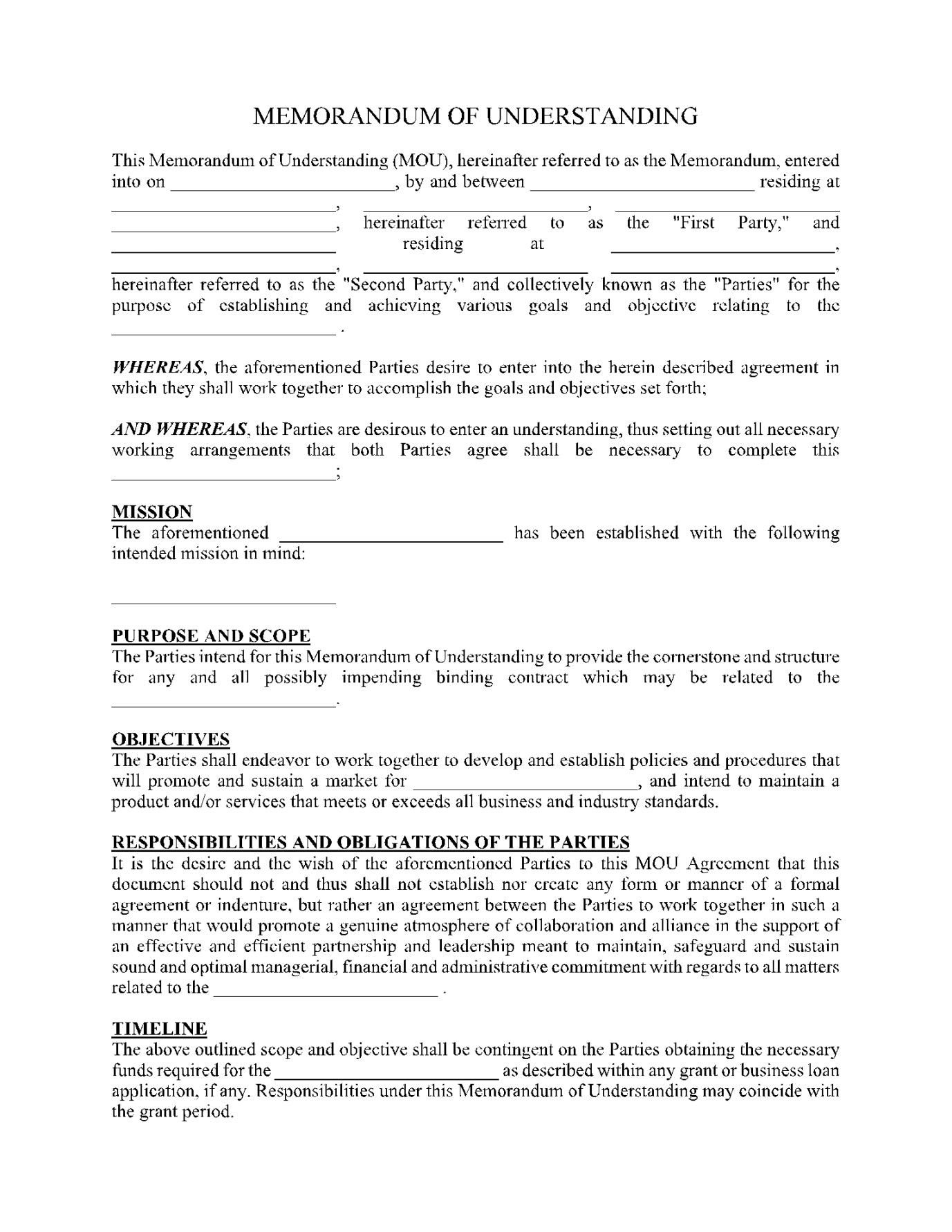A Memorandum of Agreement (MOA) is a legal document that outlines the terms and conditions of a collaborative agreement between two or more parties. It is a valuable tool for establishing mutual understanding, defining roles and responsibilities, and safeguarding the interests of all involved. While an MOA is generally less formal than a contract, it still serves as a legally binding document.
Key Components of a Memorandum of Agreement:

1. Parties Involved: Clearly identify the names and legal status of all parties involved in the agreement.
2. Recitals: This section provides background information about the purpose of the MOA and the reasons for entering into the agreement.
3. Purpose of the Agreement: State the specific objectives and goals that the MOA aims to achieve.
4. Scope of Work: Define the exact nature and extent of the collaboration, including the deliverables, timelines, and responsibilities of each party.
5. Terms and Conditions: Outline the specific terms and conditions that govern the agreement, such as payment terms, intellectual property rights, confidentiality obligations, dispute resolution mechanisms, and termination provisions.
6. Signatures: The MOA must be signed by authorized representatives of all parties involved.
Design Elements for a Professional MOA:
Layout and Formatting: Use a clean and consistent layout with clear headings, subheadings, and bullet points to enhance readability.
Writing Style and Tone:
Clarity and Conciseness: Use clear and concise language that is easy to understand. Avoid jargon or technical terms that may be unfamiliar to the parties involved.
Example Sections and Content:
Parties Involved
Party A: [Company Name], a [legal entity] with its principal place of business at [address]
Recitals
WHEREAS, Party A and Party B desire to [state the purpose of the agreement]; and
WHEREAS, Party A and Party B have agreed to collaborate on [state the nature of the collaboration];
NOW, THEREFORE, in consideration of the mutual promises and agreements contained herein, Party A and Party B agree as follows:
Purpose of the Agreement
The purpose of this MOA is to establish a collaborative relationship between Party A and Party B for the purpose of [state the specific objectives of the agreement].
Scope of Work
Party A shall [describe the specific tasks or deliverables to be provided by Party A].
Party B shall [describe the specific tasks or deliverables to be provided by Party B].
The timeline for completion of the project shall be as follows: [outline the project timeline].
Terms and Conditions
Payment Terms: [Outline the payment terms, including payment schedule, invoicing procedures, and late payment penalties.]
Conclusion
A well-crafted Memorandum of Agreement is essential for establishing a clear and mutually beneficial partnership between two or more companies. By carefully considering the key components, design elements, and writing style, you can create a professional and legally binding document that protects the interests of all parties involved.